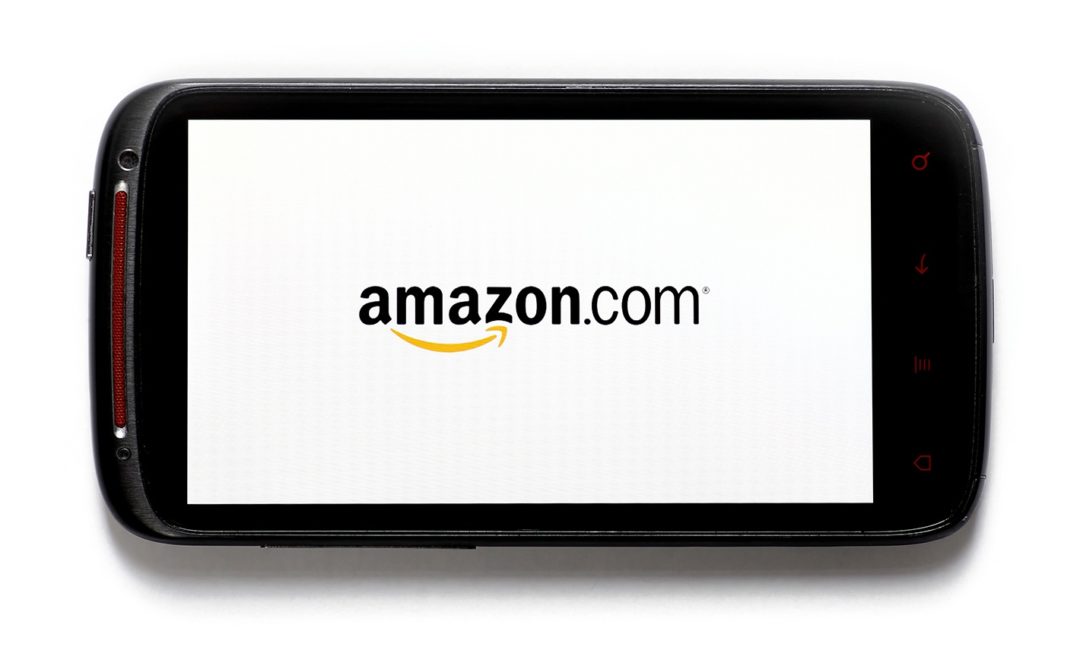Amazon is a Retailer FirstWhat is Amazon’s main business? Judging by its lofty stock share-price of more than 200-times 2016 earnings — its price/earnings ratio (P/E) — investors believe Amazon is a game-changing, hyper-growth tech company along the lines of Netflix, Salesforce.com and Yelp, all of which have P/E ratios north of 400. Compare the 2016 P/Es of Facebook at 47 and Google at 34, both companies with billions more in profits and much fatter margins than Amazon. But there is one big difference between Amazon and these high-flying tech disruptors: Amazon gets most of its sales from shipping real-world products like washing machines and dryers.
In the U.S. alone, Amazon has 243 warehouses and distribution centers totaling 94 million square feet, with plans for nearly 300 warehouses and 130 million square feet. Worldwide, Amazon is aiming for 500 warehouses and 200 million square feet. Amazon’s business model is a lot more complex than moving pixels over wired and wireless networks, which is all these pure-play tech companies have to do.
As of the second quarter ended June 30, 2017, 90% of Amazon’s sales came from retail. Only 10% of sales come from what you’d call tech: Amazon Web Services (AWS); a cloud-computing business, offering remote servers to customers who wish to store, analyze, and transmit data without the burden of owning and constantly having to update computer hardware and software.
And, Amazon’s growth rate is slowing on both the virtual and real-world sides of its business, and its profit margins are shrinking. Take a look at what the company said in its most recent quarterly report to the U.S. Securities and Exchange Commission:
We Face Intense CompetitionOur businesses are rapidly evolving and intensely competitive, and we have many competitors in different industries, including retail, e-commerce services, digital content and electronic devices, and web and infrastructure computing services. Some of our current and potential competitors have greater resources, longer histories, more customers, and/or greater brand recognition, particularly with our newly-launched products and services and in our newer geographic regions. They may secure better terms from vendors, adopt more aggressive pricing, and devote more resources to technology, infrastructure, fulfillment, and marketing.
Time = Money = DiscountCertainly, Amazon has done a great job signing up customers for its retail services. The company has said that “tens of millions” have joined Amazon Prime, a figure Moody’s Investors Service, the corporate bond credit-rating company, puts at 50 million. Amazon has figured out that once members pay the $99 annual fee to get free shipping, they won’t be as likely to check individual product prices carefully — or at all. They are “in” the system, and focus mainly on the convenience of ordering remotely and receiving goods on their doorstep without having to spend time driving to the store and lugging stuff home themselves.
With Amazon Prime, the company has proven that, to a majority of U.S. consumers, saving time is more important than saving money.
Longtime readers of this column will be familiar with my warning to avoid product price wars unless you are the lowest-cost provider. Otherwise, your competitors with better buying power than you hold the stronger hand, and will eventually win the war, potentially putting you out of business. With Amazon’s millions of square feet of fulfillment centers, most-favorable shipping rates with UPS, FedEx, the U.S. Postal Service, and its own delivery truck fleet, the company is easily the lowest-cost provider for home delivery —at least for non-perishables. Perishable fresh foods are another matter we’ll address in a minute.
Any brick-and-mortar food retailer who thinks it can compete with Amazon on home delivery, including through a third-party delivery service like Instacart, is playing the weaker hand because of higher costs. Just as with product discount wars, going head-to-head with Amazon on delivery is a war you won’t win.
Should You Have a “Web Cart”?With Amazon likely buying Whole Foods Market, industry vendors of e-commerce software, website development, customer loyalty programs, data analytics, and dozens of other “tech” solutions are using this event to strike fear in the hearts of brick-and-mortar natural products retailers. YOU NEED E-COMMERCE! YOU NEED ARTIFICIAL INTELLIGENCE to analyze customer purchase data! YOU NEED A SMARTPHONE APP!
All of these “solutions” require a third party inserting itself —often with product manufacturers along for the ride — in between you and your customer. For a fee, of course. For example, if you want to create a web cart, a third party software vendor will hook you up with a wholesale distributor so that you can have a full-blown shopping cart with thousands of product pictures, descriptions, and prices. In order to do this, you’ll need to take a smaller profit on each sale. It’s worth asking how offering the same products on the same e-commerce platforms available to your competitors differentiates your store from the rest of the world.
There’s no getting around it: e-commerce eats up resources —both people and money. Managing your website, keeping your product files up to date, maintaining correct pricing. E-commerce is much more expensive, and works on much smaller profit margins, than brick-and-mortar. For proof, just look at Amazon: it makes 0.87% — less than one percentage point — on its $123 billion in e-commerce product sales. Can you do better?
The Good News…EventuallyAmazon’s growth has been amazing. But its products and services are not unique. As the company said in its SEC filing, it faces stiff competition in all areas, virtual and real-world. Walmart has a website, too, with millions of products, and billions in sales, and is growing rapidly. Walmart’s 4,000-plus U.S. stores are ideal customer pick-up points and outnumber Amazon’s by a factor of ten times. Amazon’s nearly invisible profit margins, coupled with its obvious lack of success in delivering perishables at scale, suggest at some point the market may decide a better valuation may be closer to the 40 P/Es of Facebook and Google, or if the company stumbles badly in its attempt to deliver fresh food, maybe a P/E of 4.
Which brings us to why Amazon, apparently hastily, offered to buy Whole Foods. First, it appears the offer was a reaction triggered by Whole Foods grasping for a rescue from activist investors pushing for a sale of the company. Had Amazon’s offer been part of a well-thought-out strategy, perhaps we would have heard it described by either company. But, no. Amazon said nothing, and Whole Foods’ CEO Mackey merely invoked “love at first sight” of Amazon CEO Bezos.
Is Amazon imagining reconfiguring the Whole Foods shopping experience to be more automated, with cashier-less checkouts like Amazon Go? Perhaps. But early testing of Amazon Go revealed major problems with the technology, and the initiative appears to have stalled. Does it make sense that, lacking confidence in shopping automation, Amazon would want such an expensive, high-profile, upscale stage as Whole Foods to work out the kinks? Or, if Amazon were confident in its ability to streamline food shopping, why didn’t it buy, for example, Sprouts Farmers Market for a fraction of the price it paid for Whole Foods?
Sprouts, with its 279 smaller stores, mostly outside the big metropolitan markets, noticeably better retail prices, stronger comparable store sales, and what looks like a much easier real estate path to national expansion could have cost much less than the $13.7 billion Amazon offered for Whole Foods. Maybe Amazon realizes that the potential market for delivering premium quality fresh foods exists mainly within the wealthiest, most densely populated urban areas Whole Foods occupies, with the rest of the country a big question mark.
Stick to Your KnittingAt the very least, with its purchase of Whole Foods, Amazon is admitting it needs brick-and-mortar to grow further in the fresh foods business. All of a sudden, the playing field appears much more level for the major supermarket chains, both national and regional. As you think about the future of fresh food, you can take comfort in knowing that NO ONE — outside a few square miles of central New York City — has yet worked out profitable fresh foods delivery over the last mile.
I’m always amused at the bundle of pundits who, when referring to the threat Amazon poses to the brick-and-mortar grocery industry, use the phrase “ordering online” as if it were kryptonite. But focusing on online ordering misses the most important point: how fresh foods are going to be delivered to, or picked up by, the shopper. In the meantime, keep calm, drink kombucha, open your doors, smile at your customers, call them by name, hire employees who care about others at least as much as themselves, train them to treat shoppers well, and make sure those who’ve made the effort to visit you have a really good time. You’ll be fine. JJ

Jay Jacobowitz is president and founder of Retail Insights®, a professional consulting service for natural products retailers established in 1998, and creator of Natural Insights for Well Being®, a holistic consumer marketing service designed especially for independent natural products retailers. With 34 years of wholesale and retail industry experience, Jay has assisted in developing over 900 successful natural products retail stores in the U.S. and abroad. Jay is a popular author, educator, and speaker, and is the merchandising editor of WholeFoods Magazine, for which he writes Merchandising Insights and Tip of the Month. Jay also serves the Natural Products Association in several capacities. Jay will be exhibiting at Natural Products Expo East in Baltimore, MD, Booth 3830. He can be reached at (800)328-0855 or via e-mail at jay@retailinsights.com.
Published in WholeFoods Magazine September 2017
The online version of this column was updated to reflect new information about the number of Amazon Prime subscribers.
WholeFoods Magazine has no affiliation with Whole Foods Market.










